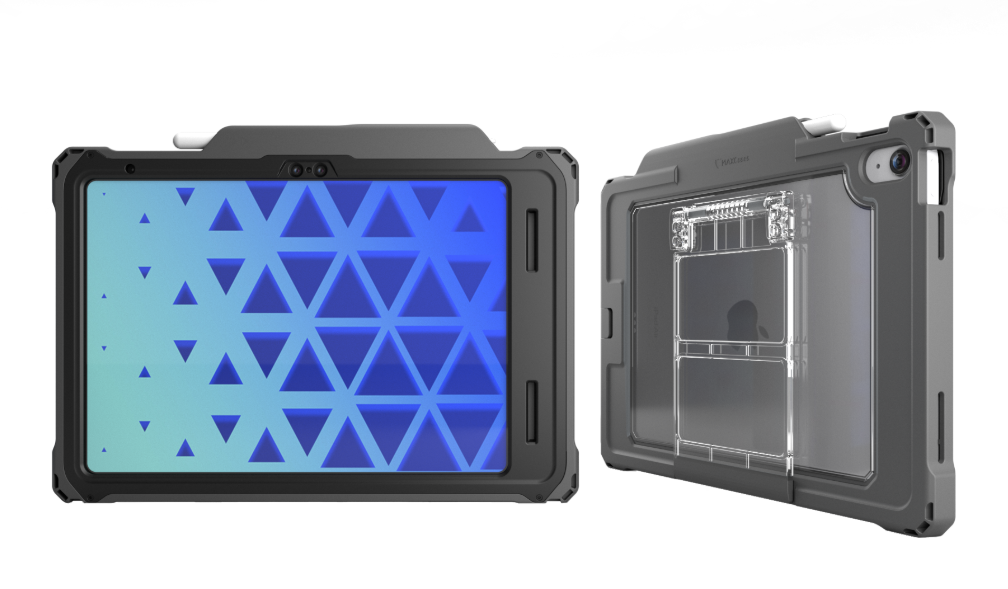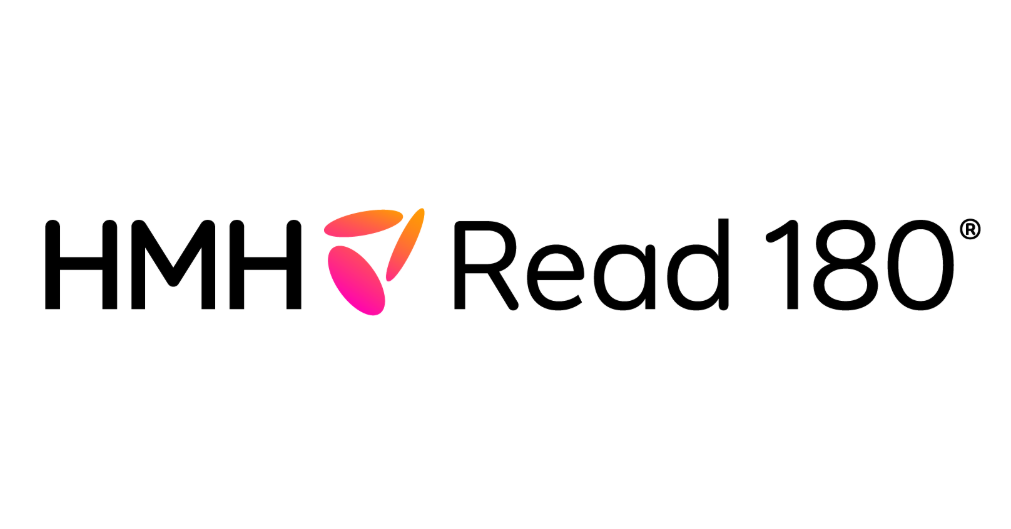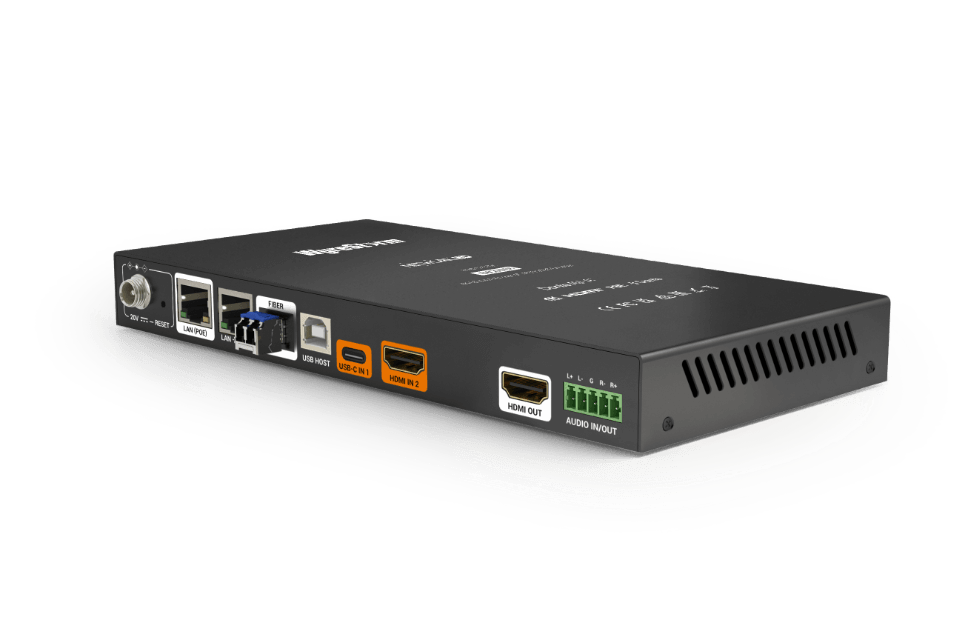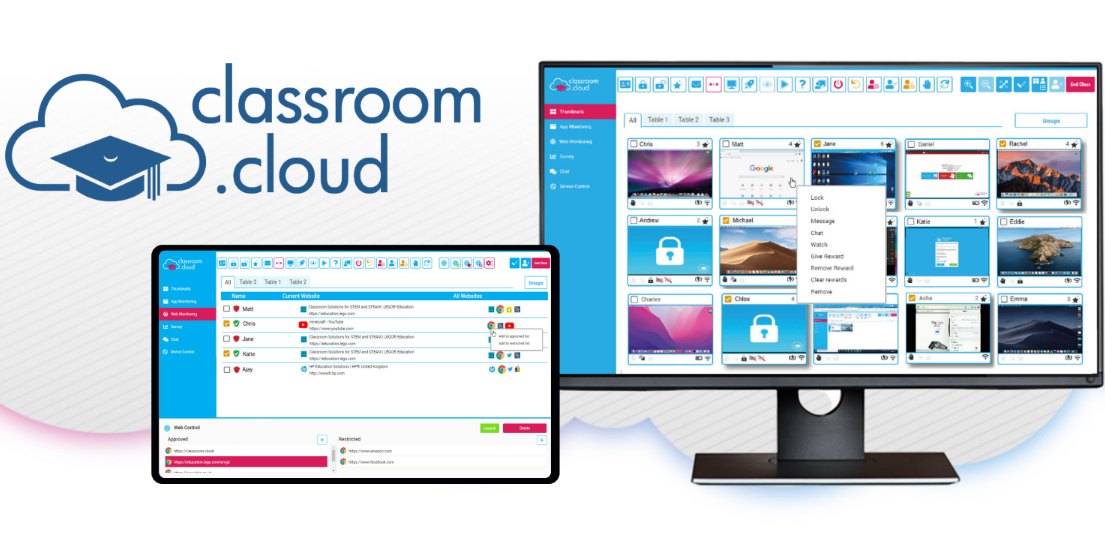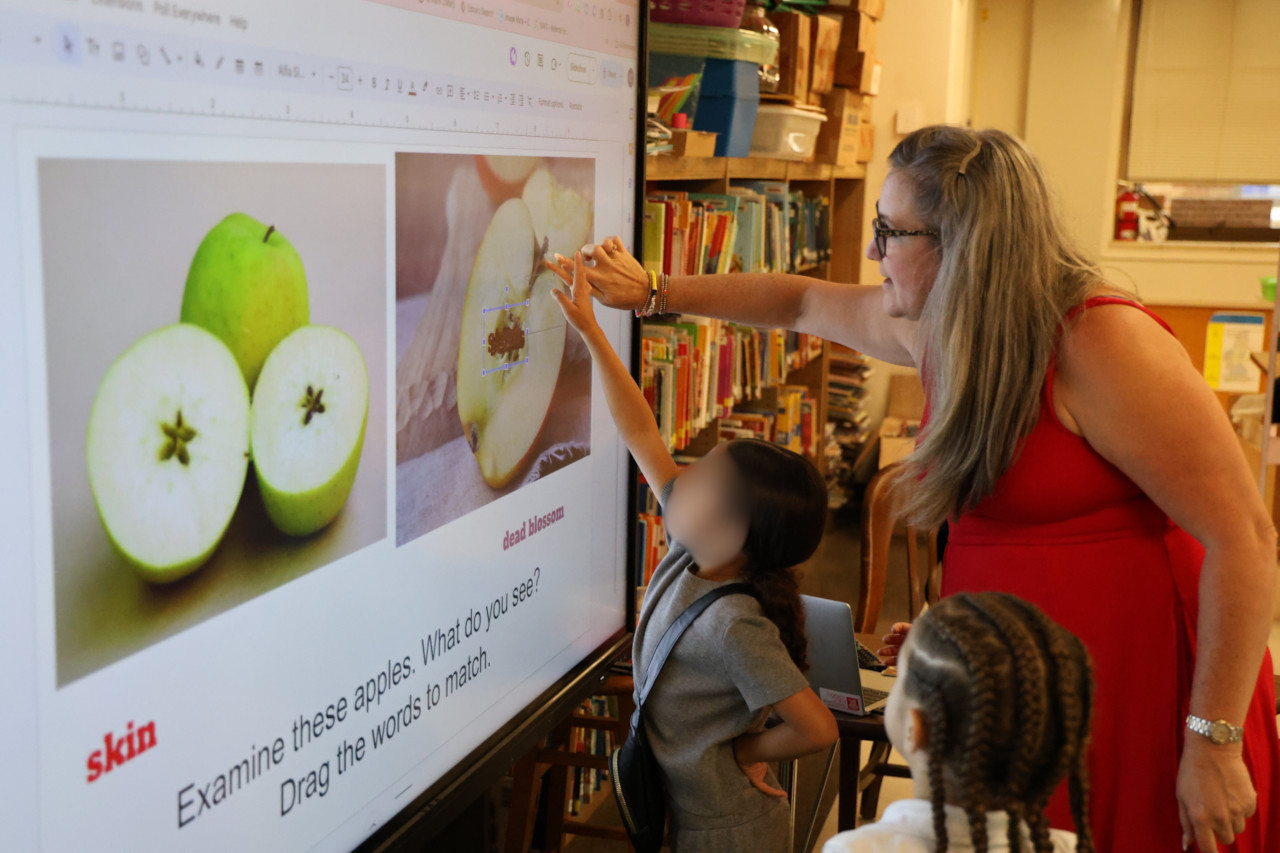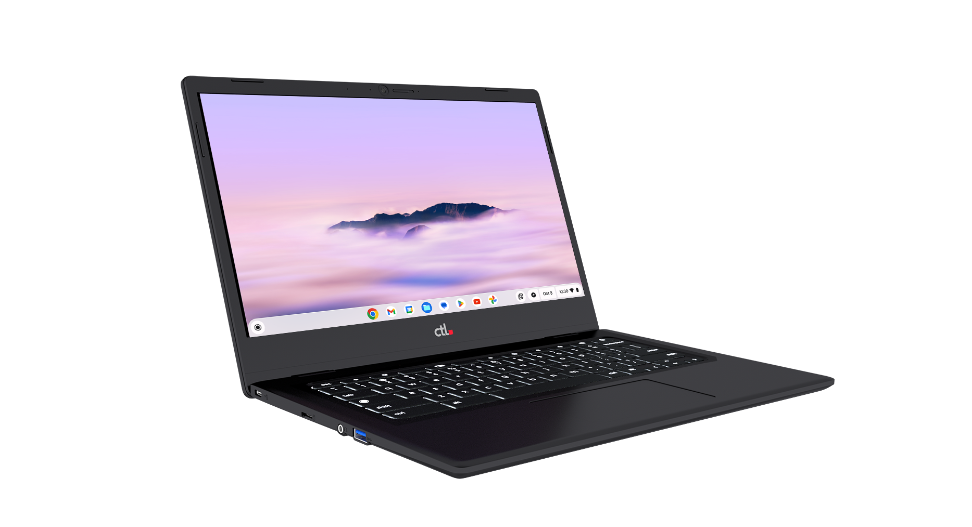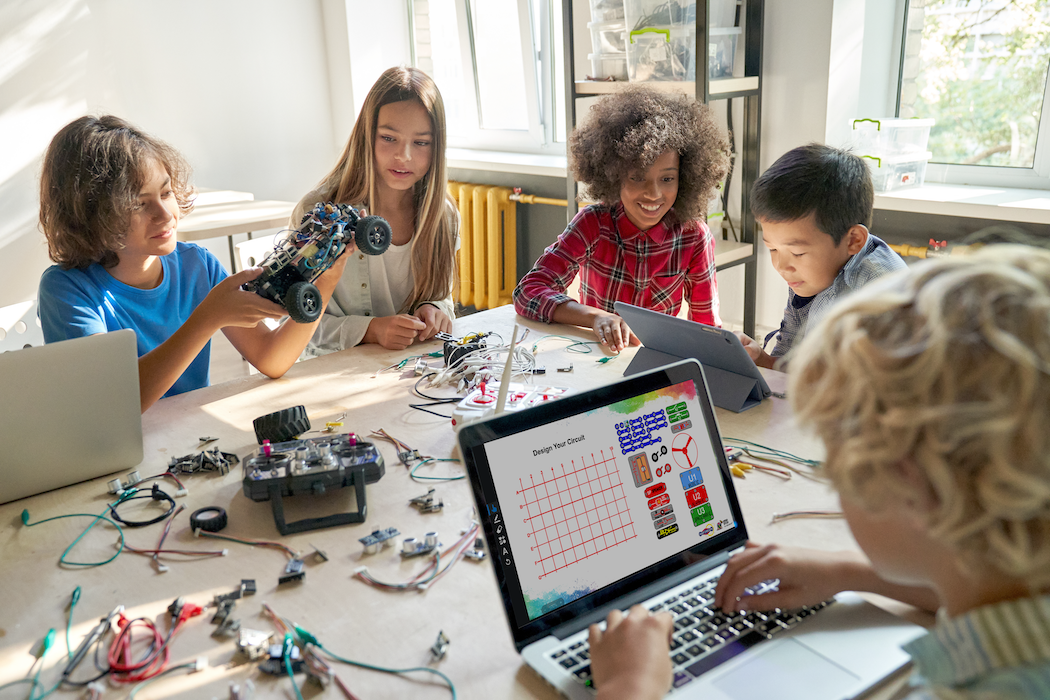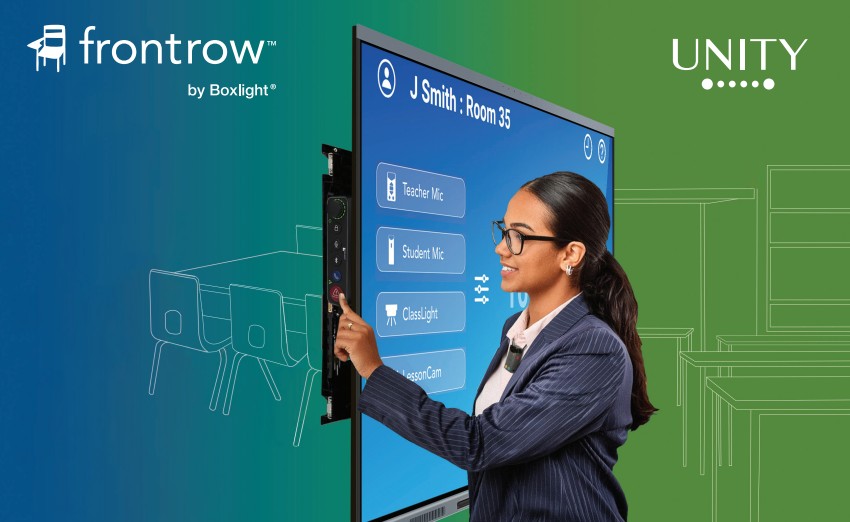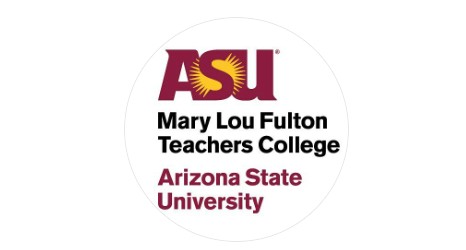THE MORE YOU READ, THE MORE YOU’LL KNOW: ELA SOLUTIONS ROUNDUP
Which reading solution will best support your students and teachers so everyone can be reading on or above grade level by June? Here are some recommendations, best practices, and creative ideas from teachers, librarians, and administrators.
ThinkCERCA
Renaissance AR 360
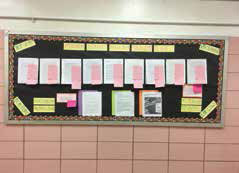
Who’s using this tool? ELA instructor Fatema Mohassib and her science-teacher colleague at IS 281 Joseph B. Cavallaro School in Brooklyn. New York, experienced a eureka moment when they realized they could shift the ELA curriculum to align with science and social studies topics. And when they did, deep connections and critical thinking resulted. Mohassib describes it as “revolutionary.” Everyone at Mason Elementary, in the Grand Blanc (MI) School District, is justifiably proud that their school is in the top 1% for test scores in the state. And fourth-grade teacher Christina Ostrander loves helping students in this diverse school “actualize their unique genius.” Her young students bring their 1:1 Chromebooks home and back to her classroom, where the opportunities to learn are as flexible and personalized as her “find your niche” seating plan.
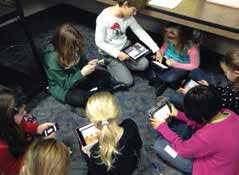
What do educators like best about this reading solution? One of the cornerstones of this curriculum alignment is ThinkCERCA. Choosing texts is time-consuming—and it’s nearly impossible to find texts on the same topic at different levels. Having quality leveled texts on a wide variety of subjects is key, says Mohassib, as is the flexibility that allows students to move at their own pace. And students enjoy using the platform. “If you ever want to know if something is working,” she says, “ask the students.” Ostrander loves Renaissance AR 360 for the access it provides to varied, complex, and engaging texts that can be annotated and highlighted. “They know what interests kids,” she says. Her students enjoy reading about a boy who made money from whale poop, stink-free armpits, and a teen mountaineer, for example. The texts help kids to dive deep, into knowledge as well as vital character traits, and they spur thinking and spark discussions across content areas. The cross-curricular topics are “a mark of an excellent program,” Ostrander says. And everyone can participate. “Students can be reading the same article at different levels,” she says, “and no one knows.”
What kind of impact has implementation had on students? After reading an article on mandatory voting last October, many seventh graders formulated strong arguments defending a citizen’s right not to vote. As the election unfolded and students witnessed the impact of that position, many revised their thinking using ThinkCERCA’s structure (claim, evidence, reasoning, counterargument, audience). These real-world connections forged greater understanding and engagement. Students are so fascinated by the texts they’re reading that they want to dig deeper. They ask to go to the library to find out more, and it’s not unusual to see students on multiple devices at once—reading, researching, watching videos. With a device and Google, Ostrander tells her curious students, “there’s no ceiling—you can go anywhere.”
Lexia Reading Core5
TenMarks Writing
i-Ready

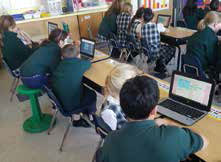
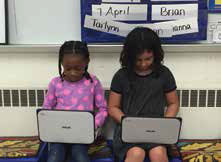
Who’s using this tool? The ingredients for success at Somerset Academy Miramar Public Charter School in Broward County, Florida, include lots of collaboration among very dedicated teachers, a family-oriented emphasis, patience, consistency, and good access to resources, including technology. When Krystin Neuens’ fourth-grade students at The Brompton School, a charter school in Kenosha (WI) USD, were preparing for a state assessment on text-dependent analysis, Neuens used a TenMarks prompt. “My goals,” she says, “were to help the students become more independent in the task (also in writing in general) and to get them familiar with this type of writing.” The 650 students at Parker-Varney Elementary, a high-poverty school in Manchester, New Hampshire, speak 11 different languages. “We rely on personalized learning,” Principal Amy Allen says, “to help address our equity issues.” Parker-Varney is a multi-platform school, and students have 1:1 access to a device.
What do educators like best about this reading solution? Reading coach Michelle Rojas likes that Lexia is a comprehensive solution with user-friendly, real-time reports, as well as lots of resources including a library of lessons and downloadable activities. “The program is working behind the scenes and making adjustments based on performance,” she says, “but it’s not just an online program. It’s a tool for teachers.” And the game-like environment motivates and rewards students as they complete each level. Lessons include resources such as handouts, writing coach tools, and assignments to help students work on skills like word choice, editing, and revising. “Students really enjoyed the program as a whole,” Neuens says. “Their favorite part was the Bursts, which were short writing responses that were similar to responding on a social network. Student writing improved with their use of the program due to all of the practice and support the program offers.” i-Ready is adaptive, age and developmentally appropriate, and easy to use. It aligns with standards, provides lessons and instant assessment data, and can be accessed from multiple platforms. “Making the transition to personalized, competency-based education with performance assessments is paying off,” says Allen. She notes that personalized learning “levels the playing field by allowing students to participate in lessons at their own level.” Access to learning 24/7, she says, “is critical for students in poverty.”
What kind of impact has implementation had on students? In just one school year, the percentages of students working at or above grade level increased from 48% to 95%, and those working below grade level decreased from 52% to 5%. Lexia’s Performance Predictors, one of Rojas’s favorite features, prompt crucial early intervention. “It can be a preventative tool,” she says. In January, one student was “1% likely” to meet the benchmark at the end of the year. Alarmed, the school called a conference and made adjustments—and the student passed the first assessment at the end of the year. “I had one student who was a reluctant writer, typically, but with the program they were able to create a piece of writing that was quite lengthy,” Neuens says. “Using the tools the program has available, the writing was also of higher quality than was typical. In addition, many students would ask me if they could go in and do the Burst writing activities. It is refreshing to see students asking me to be able to write in their free time.” In addition to “deeper, more authentic learning opportunities and greater student (and parent) engagement,” assessment scores have improved dramatically. In the 2016–17 school year, for example, special education referrals declined by 21% and Grades 2 and 3 ELLs went from 54% proficient in reading to 85%. This kind of growth brings its own challenges. “We now have to have discussions,” Allen says, “about how to meet the needs of students who have mastered the elementary competencies but may not be emotionally ready to move up to the middle school.” For one struggling student who was making no progress despite several different interventions, in-depth assessment data revealed that she was weak in phonics. Through a combination of targeted instruction from her teacher and an adaptive program, she made a year’s growth by the end of the school year.
OverDrive
Voyager Sopris Learning’s LANGUAGE! Live
PebbleGo!

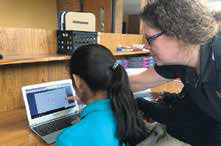
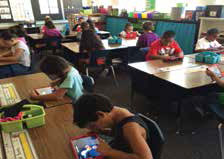
Who’s using this tool? Napa Valley (CA) USD, home of the first New Technology High School and early adopter for numerous edtech programs, fosters a tech-forward environment where interoperability, efficiency, and access are key. Kate MacMillan, Coordinator of Library Services, says that OverDrive’s consortium business model has enabled the district to build collections for elementary, middle, and high schools and maximize their investment in rich resources that are available to as many students as possible. Chattanooga (TN) Girls Leadership Academy implemented LANGUAGE! Live, a blended model that combines teacher-led instruction with online practice to help struggling students become proficient readers, for students in grades 6–12 last year. Bean Elementary is a 1:1 school in Lubbock, Texas. Library Media Specialist Janie Curl looks for “simplicity and usefulness” in programs that will provide variety to pique ongoing student interest, audio-based text to increase stamina, and tools to support ELLs as well as native speakers.
What do educators like best about this reading solution? “We love OverDrive!” MacMillan says. Students have access to content that can be downloaded and read anywhere, and it’s easy to use across different platforms. The district was able to migrate all of their Follett content to OverDrive—and they’re able to search all of those resources. In addition, “ebooks are never lost, broken, or stolen,” MacMillan says. She’s been surprised to discover that students love audiobooks, and OverDrive offers opportunities for students to “read with their ears.” “LANGUAGE! Live covers all the bases, and you could tell the girls really loved the literature and their learning of grammar and reading,” says seventh-grade teacher Kingsley Bennett. Curl says teachers are excited about “how these tools help them teach and reach students [who] may be reluctant. It helps the students develop their reading skills more efficiently without the feeling of dread.”
What kind of impact has implementation had on students? Students always have their devices. And with anytime, anywhere access to ebooks, they can always be reading—and they are, as evidenced by the mountains of pizzas the district had to purchase to reward students for a summer e-reading program. With OverDrive, students can search and read freely and can also underline and take notes which, as one student says, “you can’t do in a borrowed print book.” Through OneCard, Napa Valley students’ ID cards give them further access to materials from the public library consortia. As libraries continue to evolve in this digital age, these students have the world at their fingertips. In addition to average literacy gains of 2.4 years in just one school year, students also benefitted from seeing clearly how their hard work and perseverance led to achieving their goals. Although many high-school students were initially reticent about being in a reading class, says literacy coach Jean Anne Gardner, “LANGUAGE! Live is very respectful of high-school students with age-appropriate materials,” and students enjoyed remarkable success. “Towards the end of the 2016 school year, a first-grade teacher came to me and urged me to continue subscribing to PebbleGo! because her students loved how the format (simplicity) and materials provided got them engaged.” The very fact that students love reading is a sure sign of success.
StudySync
myON
Follett Destiny
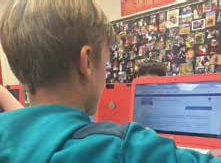

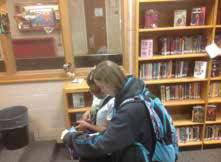
Who’s using this tool? Before implementing StudySync at Troy Intermediate School in Ohio, teachers identified the skills their students were lacking. Then they used this comprehensive, cross-curricular ELA solution to address those gaps. When Chris Marczak arrived as the new superintendent of Maury County (TN) Public Schools in 2015, he met with staff, parents, and community stakeholders, visited 22 schools in 22 days, and collated feedback submitted on 9,327 Post-its to arrive at seven keys to college and career readiness tied to cumulative grade-level goals. Two years on, this once-failing district is experiencing transformation. And myON is one of the ingredients of its success. It’s fitting that a gamified reading program emphasizing collaboration, communication, and creative thinking was hatched as a result of networking and brainstorming at Edcamp. O’Neill Middle School librarian Tasha Squires, in the Downers Grove (IL) Grade School District 58, wanted to shake up a winter reading program and broaden it to include writing. The resulting game, “Conquest of the Realm,” increased participation in library programs from 17% to 80%—and it won the 2015 Follett Challenge.
What do educators like best about this reading solution? Sixth-grade ELA teacher Heather Dalgleish and her colleagues love StudySync’s flexibility and the variety of content that teachers can tailor to fit their needs. “I start my day with a gifted class, my next period is general ELA, and my last is inclusion,” Dalgleish says. “StudySync allows me to differentiate through Lexile levels. Everyone benefits, because I can stretch students or remediate, depending on what my students need.” In this diverse district, different schools achieve these keys in different ways—from on-grade-level reading in third grade to improving ACT scores. “Our job,” Marczak says, “is to give teachers the tools they need and provide students with more access to materials. So we formed a partnership with myON.” Teachers love that myON gives them instant snapshots of Lexile levels, is device-agnostic, and gives all students access to over 10,000 titles. As the district moves to implement a 1:1 program, they also appreciate that the program supports reading online, in print, and through audiobooks. “Reading is reading,” Marczak says.
The game has sparked enthusiasm and inspired a culture of reading and writing. It has also helped teachers, administration, and staff to grow and work together. Prior to the launch of this voluntary program, Squires sought buy-in from teachers and built anticipation among students. “I wanted something that would give the students something exciting to engage with each other and the staff in a new way. It ended up being way more successful than I had ever dreamed,” Squires says.
Participating students complete challenges that require them to create original work (e.g., book trailers and creative writing pieces) and communicate, in person and using online tools, with students and teachers outside their classrooms. Over 100 students in each of the four teams meet online using Edmodo, and a circulating Google spreadsheet showing each team’s up-to-date points ramps up the competition and encourages strategizing.
What kind of impact has implementation had on students? The numbers are impressive: Dalgleish’s general ELA students grew an average of 4.5 in 2016 (compared to 1.5 in 2015 before StudySync was implemented), and her advanced students grew an average of 2.7, compared to 1.7 in 2015. Behind the numbers, though, is the engagement that drives that success. “The kids are very engaged. They love it,” she says. “My students especially love the Blasts [short , social media-like reading and writing assignments on high-interest topics], and they beg me to do them … they don’t realize … they’re actually engaging in critical thinking.” In less than a year, average third-grade Lexile levels increased from 280 to 395. Lower-level readers can listen to books, and ELLs and their parents are learning English more quickly and with more fluency through listening to audiobooks as well. At the high-school level, requests are already coming in for more complex texts. With nearly 550,000 books read throughout the district on myON last year, these students are indeed being prepared for college and career success. The school’s MAP test scores showed no summer slide, and students are improving their literacy and 21st-century skills while having fun. Students have competed for the throne in the Lands of Oneillia (2015) and sought to survive in the 2016 zombie/infectionthemed game. This year’s theme is dragons. Squires has been most gratified by seeing all students, including those “who tend to be on the fringes,” ELLs, and special ed students, joyfully competing, learning, and succeeding.
For more details on Squires’ creative solution using Follett Destiny, go to tinyurl.com/TLOct17Reading
Tech & Learning Newsletter
Tools and ideas to transform education. Sign up below.
